Value Midrange Common Components
While AMD and Intel architectures differ in sockets and sometimes memory configurations, there is more that is the same in the two systems than there is that is different. For that reason the Intel and AMD Value Midrange Systems share a number of common components.
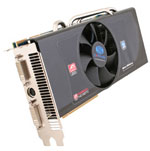 |
For video card best value we have paired the Sapphire Radeon HD 4870 1GB with both the Intel and AMD systems. As pointed out in the recent Holiday 2008 GPU Guide, the 4870 1GB is the minimum card we use internally for gaming comparisons. The Sapphire was our guide choice, but $230 seems the going rate for the 4870 1GB these days. It is available from MSI, Diamond, ASUS, HIS, Power Color, and others so you can shop for the best buy.
On the Intel system, the Gigabyte GA-EP45-UD3P motherboard provides a second PCI x16 slot. Video performance can be improved even further by adding a second Radeon HD 4870 1GB in CrossFire mode. You can also start with two 4870 512MB video cards that are now available for as little as $180 each from Power Color. This will provide 4870 CrossFire for a video card cost for both cards of just $360 total. The motherboard choice for AMD is the Foxconn A79A-S, which also provides multiple x16 slots for CrossFire. The same video options apply to the AMD Value Midrange system.
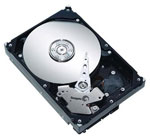 |
Hard drive capacity continues to grow, as you can see in our selection of the Seagate Barracuda 1TB drive (1000GB). While the Seagate 1.5TB drive was plagued with problems at its release, the performance and reliability of the 1TB Seagate has been excellent in our testing so far. For a price of around $100 the value is incredible. While there are differences between hard drives, outside of running benchmarks most people aren't likely to notice the difference in performance between Western Digital, Seagate, Samsung, Hitachi, and other major brands. All are worthy of consideration if the price per gigabyte (or terabyte) is right.
 |
We feel the optical drive for a best value midrange system needs to play Blu-Ray disks. The flexible LG GGC-H20LK has the ability to read both Blu-Ray and HD format disks. It also can burn DVDs at 16x speed in single or dual-layer formats. It cannot, however, burn 25GB/50GB Blu-Ray disks; adding that capability raises the cost to around $200 to $250. BD burners like the $200 LITE-ON 4X BD-R 12X DVD+R 4X Blu-ray DVD-ROM or the $230 LG 6X Blu-Ray Burner GGW-H20LK are good choices.
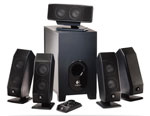 |
Cases are often very personal choices when it comes to features, but the Cooler Master RC-690-KKN1-GP is one of our favorites and it is also very well regarded by our readers. It comes standard with three 120mm fans for excellent cooling and low noise, and the power supply mounts in the bottom of the case. Audio, USB, Firewire, and eSATA ports are on top of the case, which we find an ideal location. The front bays are also ventilated metal mesh for cooling and appearance. If you prefer a more traditional case configuration, the Cooler Master Mystique, also selling for $80, mounts the PSU on top, provides font panel jacks, and is loaded with expansion ports and two 120mm fans.
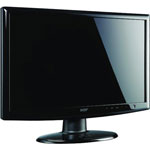 |
The last major component to discuss is the display, and here the tilt was toward best value at full 1080p HD (1920x1080) resolution. The new class of 16:9 21.5" LCD monitors provide true 1080p resolution at the break-through price of just $199. That stellar value shows just how far LCD technology has progressed. If your budget allows, or you just prefer a slightly bigger screen at the same resolution, you can move up to a 24" 16:9 1080p LCD that is selling today for around $300. Alternately, you can downgrade the resolution to 1680x1050 for slightly larger pixels (i.e. more readable text) if you purchase a 22" LCD and save a bit of money.
While the Creative Sound Blaster X-Fi Xtreme Audio is not the best sound card on the market, it is definitely tops in game compatibility. This Creative X-Fi card does a good job with audio, won't break the bank at $50, and it is a great choice for either set of powered speakers. Some would argue that onboard sound is all you need for a $1500 system, and if you are inclined to agree or have a really tight budget, you can save $50 on either the Intel or AMD Value Midrange builds just by using onboard sound.
 |
The Logitech X-540 has been a perennial favorite of users as a reasonably priced but good performing, powered 5.1 computer speaker system. It will certainly not challenge the performance of a separate Dolby amplifier powering audiophile speakers, but it will provide surprisingly good sound for the price.
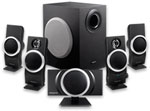 |
The Creative Inspire T6100 76 Watts 5.1 Speaker System is a similar powered speaker system that is selling at Amazon for just $57. The Creative speaker system is our choice in the AMD Value Midrange system, but either speaker system is a good choice for these Value Midrange builds.
Our choice for the top of the midrange is the well-regarded Logitech G51 system. This is mentioned only because the G51 is now just $90 after a $40 rebate, so if you want a better speaker system your net cost for choosing the G51 instead is just $10 more than the Logitech X-540 or $33 more than the Creative Inspire T6100.
 |
These are clearly desktop systems, so the keyboard and optical mouse are the basic Microsoft OEM kit. If you have more specific needs or a favorite gaming mouse you likely know exactly what you prefer. The Microsoft pair is very capable for most. For greatest compatibility, we have chosen Microsoft Vista Home Premium OEM as the Operating System. Unless you have specific networking and special enterprise security needs there is no real reason to pay the extra for Vista Ultimate. We personally recommend the 64-bit version now, but a select few applications still need a 32-bit OS (i.e. Dragon NaturallySpeaking and GameTap to name just two).










77 Comments
View All Comments
Wesley Fink - Monday, January 12, 2009 - link
We have revised the comment to more accurately reflect what we were trying to convey. We don't want to leave the wrong impression on this. Core i7 is definitely the fastest current CPU, but Phenom II competes with i7 much better than Phenom. Phenom II also has a cheaper $235 CPU that offers terrific performance for the price7Enigma - Monday, January 12, 2009 - link
Thank you for the revision. I did not want it to seem that I thought you were being biased towards the Phenom II, just that it was a bit misleading in its original form. While architecturally it is closer to the Core i7, performance-wise it's closer to the Q9300/Q9400.I think for a mid-grade build the Phenom II is probably in a sweet spot as current high pricing for DDR3 ram and the motherboard (not to mention questionable mobo stability) make total system costs much higher for an i7 build.
As it is, I'll be building a very inexpensive system based off your $1500 Intel dual-core system as I game on a 19" LCD and do very little work that requires/is enhanced by a quad core. It's going to be a hold over system for a year or two and so I thank you for the 775 mobo and ram recommendation.
7Enigma - Monday, January 12, 2009 - link
*speaking of the 920, not the 940.7Enigma - Monday, January 12, 2009 - link
*PhenomTo add from Anand's own 920/940 review:
"Looking through the performance results, it's also worthwhile to recognize just how fast Intel's Core i7 is. Across the board Core i7 is the fastest thing out there. If the motherboard guys could get X58 board pricing down below $200 and DDR3 memory was available at the same price as DDR2, then the i7-920 would be the clear recommendation. The entry-level Core i7 is pretty much faster than the-top end Core 2 Extreme or the Phenom II."
and
"We must not forget that Phenom II is competitive with a 45nm derivative of a 2+ year old architecture."
Again I'm not bashing AMD's Phenom II chips, just that it is very misleading to say the performance is more in line with the i7.
Wesley Fink - Monday, January 12, 2009 - link
All of your comments add to the perspective on Phenom II. I believe I made it very clear that at $2000 the entry i7 was likely faster than the Phenom II. I also said on p.4 "Phenom II performance is more in line with Intel’s latest Core i7" and that is certainly true. The L3 cache of Phenom II is definitely more like i7 than the cache design of the Phenom CPU.However, Anand also points out the real advantage in the CPU/Board price enjoyed by the entry Phenom II 920. As I also said Intel's cheapest i7 is $300. There is no $235 i7 and cheap but capable motherboard as there is for Phenom II.
The article was crystal clear that Intel still owns the top, and that is i7, but AMD is competitive now in the mid-range to lower high end, where it was not before. This is not being a fan-boi as I personally run i7, but if I've given AMD a little more slack in this article I will not apologize. AMD has been trailing Intel for a long time, and in fairness Phenom II performance and overclocking came as something of a surprise to reviewers. Most did not expect the chip to be as comnpetitive as it is. AMD deserves a little credit here. I will probably use a Phenom II in my next build, as competition is good for all of us.
strikeback03 - Monday, January 12, 2009 - link
I was wondering about that as well. Anand's launch review of Phenom II seems to show that outside of gaming the i7 920 typically holds 10-20% better performance, with occasional tests showing even more. So at the $2000 price point that would likely make the AMD system the better gaming system due to the video card, but the i7 system likely faster in most other applications.Are any of the ~$200 X58 motherboards going to offer 6 RAM slots? 12GB would be even more expensive with only 4 slots.
As the PCIe X1 slots are often lost in an SLI/Crossfire setup, do any of these boards have trouble using a X1 sound card in an X16 slot? IIRC someone reported previously that some boards didn't like running X16 slots slower than X4.
Jaramin - Monday, January 12, 2009 - link
Somehow, this doesn't feel very midrange to me. It's as if the class was defined by the price instead of the performance.The value midrange aught to be performance midrange, and performance midrange is clearly high end, because one bumb ahead leads us to ultra-high end, you know, the machines we dream to have but would never buy?
Wesley Fink - Monday, January 12, 2009 - link
We did not use the term Midrange to start an argument, although a discusiion of the definition of Midrange is always interesting. Since we described our Bargain Systems as Under $1000 I have changed the title description to $1000 to $2000. I hope that removes any confusion about what is covered in the guide.Wesley Fink - Monday, January 12, 2009 - link
From the Introduction:"Midrange can start as low as $1000 and extend all the way up to around $2000, which gives a lot of flexibility in terms of choosing components. In this era of declining prices and increasing value, the midrange also covers a wider area than in the past - just as we saw in the under $1000 segment. Our budget systems near $1000 were really representative of what we might have called midrange in the past. Similarly, our $2000 system is closer to what may have been defined as high-end in earlier guides.
It's fair to ask, then, why we haven't tossed the price classes for our guides and defined new ones. That option was considered, but the fact remains that high-end prices have not declined like midrange and entry prices. New architectures have also been recently introduced at the high-end, so the definition of high and mid are shifting as the Intel Core i7 and Phenom II move into our computing space. We are already seeing a few X58 boards that will be selling for around $200, which would allow a decent Core i7 build at around $2000. Similarly, you can build a very capable Phenom II box for that same $2000."
AntiM - Monday, January 12, 2009 - link
I consider midrange to be in the $600 to $800 price range.